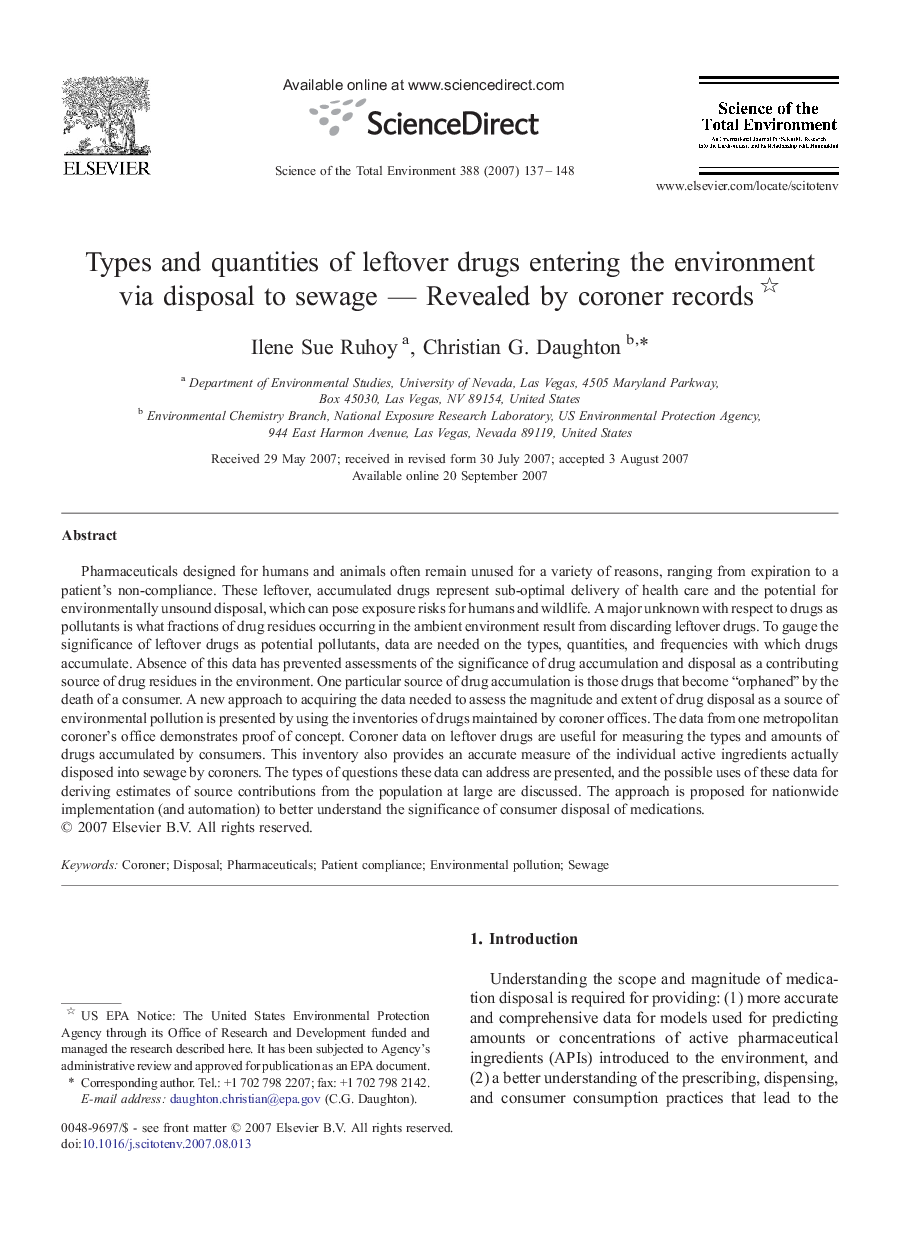| Article ID | Journal | Published Year | Pages | File Type |
|---|---|---|---|---|
| 4433234 | Science of The Total Environment | 2007 | 12 Pages |
Pharmaceuticals designed for humans and animals often remain unused for a variety of reasons, ranging from expiration to a patient's non-compliance. These leftover, accumulated drugs represent sub-optimal delivery of health care and the potential for environmentally unsound disposal, which can pose exposure risks for humans and wildlife. A major unknown with respect to drugs as pollutants is what fractions of drug residues occurring in the ambient environment result from discarding leftover drugs. To gauge the significance of leftover drugs as potential pollutants, data are needed on the types, quantities, and frequencies with which drugs accumulate. Absence of this data has prevented assessments of the significance of drug accumulation and disposal as a contributing source of drug residues in the environment. One particular source of drug accumulation is those drugs that become “orphaned” by the death of a consumer. A new approach to acquiring the data needed to assess the magnitude and extent of drug disposal as a source of environmental pollution is presented by using the inventories of drugs maintained by coroner offices. The data from one metropolitan coroner's office demonstrates proof of concept. Coroner data on leftover drugs are useful for measuring the types and amounts of drugs accumulated by consumers. This inventory also provides an accurate measure of the individual active ingredients actually disposed into sewage by coroners. The types of questions these data can address are presented, and the possible uses of these data for deriving estimates of source contributions from the population at large are discussed. The approach is proposed for nationwide implementation (and automation) to better understand the significance of consumer disposal of medications.
